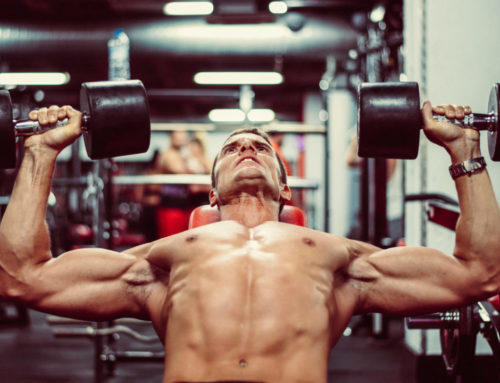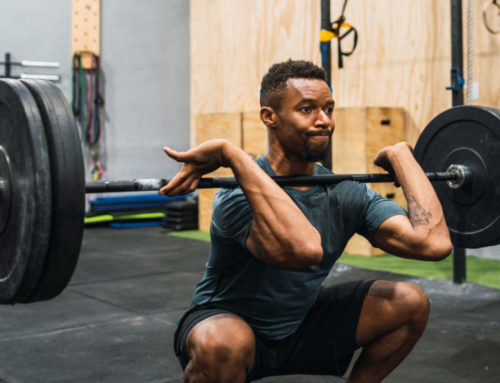Knowing your natural muscle potential can keep you motivated, even when you feel that progress is slow. In fact, one of the most important things for the aspiring meathead is to manage expectations and set realistic goals for muscle growth, but what’s achievable?
Figuring out your natural muscular potential
Dr Casey Butts has made it his life’s work to study the best physiques in history and collate all of their measurements. Also combining this with all of the science available in this field, he’s created an accurate formula to estimate an individual’s natural muscle growth potential based on height, wrist and ankle size. He’s also authored an in-depth article and ebook on the topic here
Before we dive into the formula and find out what your natural muscular potential is, let’s take a look at the factors that could affect your final result.

Does your bone structure support much muscle?
Much of Dr Butt’s formula is based on wrist and ankle size – for good reason too. When the drug-free physiques of yesteryear are examined, this seems to be a big piece of the puzzle. It’s not the end all and be all since extremes exist. For example, it’s not completely unheard of for somebody to have broad shoulders with small wrists or larger ankles but small hip and shoulder structure.
Generally though, the larger your wrist and ankle measurements, the more muscle mass the rest of your body will also tend to support.
Do you have the natural hormones for maximum muscle?
Testosterone is required for and provides muscle growth but there’s a limit to how much the body can naturally produce, and therefore how much muscle we can produce.
Normal testosterone levels for men under 40 years old are between around 3 and 10ng/ml – decreasing further as we age from there.
This is one limit that is imposed on our muscle growth, even at the upper end of testosterone levels. Adding muscle beyond what your hormone profile can support will require the use of anabolic steroids.
Do your muscles have a full belly? Unfortunately, this isn’t something that is as easy

Unfortunately, this isn’t something as easy as giving yourself a belly – it’s not a case of filling your muscles with food. This is the “bellies” that your muscles are gifted with (or cursed) from birth. Some people have fuller, longer muscle bellies, while other, less fortunate people have shorter, stringier muscle bellies that don’t quite lend themselves to as much growth.
It’s quite easy to picture – imagine somebodies bicep muscles attach all the way down to the inside of the elbow and is wider vs the guy who’s bicep stops way short of the inside elbow. There’s obviously more actual bicep to grow on the dude who’s bicep attaches further down.
You can perform a visual check on yourself by simply performing a front double bicep flex. Check the gap between your elbow and bicep. If you can fit a few fingers in between, you drew the genetic short(er) straw, unfortunately.
Fast-twitch to slow-twitch fiber ratio
Fast-twitch muscle fibers have more potential for growth than their slower-twitch counterparts. A good example that always crops up are sprinters vs marathon runners. Guess who have the fast-twitch fibers? Yup, the more muscular, explosive sprinters.
It is a little more complicated than just being stuck with the fiber ratio you have. You can train to adapt certain fibers for the goal you’re pursuing, but that’s a whole different article.
The maximum natural muscle potential calculator
You should know that there’s no 100% accurate formula based on the variability in the factors above, even when knowing your wrist and ankle size before you plug your numbers into the calculator. However, this is as good as it gets. The calculator itself is on Dr Butt’s website and you can find it here but here’s an example of an average males results below:
These figures are based on an average male (wrist size 8” and an ankle size of 8.75”)
| Height | Max weight @ 10% BF | Lean Body Mass | Bicep Size |
|---|---|---|---|
| 5’6 | 186lbs | 168lbs | 17.8 inches |
| 5’8 | 194lbs | 174lbs | 18 inches |
| 5'10 | 203lbs | 180lbs | 18.3 inches |
| 6' | 212lbs | 191lbs | 18.5 inches |
| 6'2 | 221lbs | 200lbs | 18.8 inches |
| 6'4 | 230lbs | 207lbs | 19 inches |
Note: These numbers change, likely downwards, depending on genetics. With long, full muscle bellies, optimal bone structure, consistent training, and nutrition, you can approach these numbers without the use of steroids.
For more articles on muscle building, nutrition tips, workouts and supplements, get TRAIN magazine direct into your inbox every month for free by signing up to our newsletter







